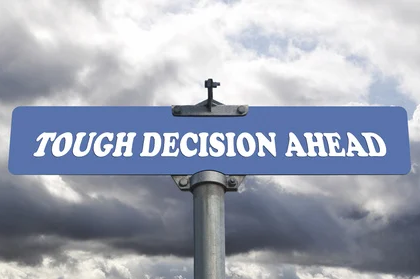Do you feel there isn’t enough time in the day “to do” all there is “to do”? Amid conflicting priorities, what do you tackle first? To succeed at growing your business, you need to win at prioritization and focus.
Steven Covey, in his bestselling book, The Seven Habits of Highly Effective People, shares one of the most prolific and encouraging stories on how to identify your priorities. As I recall, here is how the story goes:
 A professor walks into his class with several glass jars. One jar contained big rocks. Another filled with smaller rocks. The others, respectively, were filled with pebbles, sand, and water. He asked his students to place a bet on whether the ingredients from all five jars would fit into one.
A professor walks into his class with several glass jars. One jar contained big rocks. Another filled with smaller rocks. The others, respectively, were filled with pebbles, sand, and water. He asked his students to place a bet on whether the ingredients from all five jars would fit into one.
As you can imagine, the students suspected that the professor had a few loose rocks and bet against that possibility. Anxiously, they watched as the professor commenced.
The professor began by putting the big rocks in first. Next, he positioned the smaller rocks to fit nicely in the cracks and crevices between the big rocks. He then poured the pebbles over the big and small rocks; shaking the jar vigorously to ensure as many pebbles as possible fit. The sand trailed, falling into every imaginable nook and cranny.
By this time, the students were sitting on the edge of their seat — astonished! They couldn’t begin to conceive that all the elements would fit.
The professor, pouring the water gently over rocks, big and small, pebbles, and sand, finished his “lesson”.
The morale of the story? You need to put the big rocks in first, or the other “stuff” gets in the way and takes up all the space.
How can you make all your activities “fit” into your business? Start with identifying the business equivalents of big and small rocks, pebbles, sand, and water — in that order.
Next, plan for the big rocks to be arranged first; followed by the small rocks, pebbles, sand, and water — in that order. Resist the temptation to slide a few grains of sand before the small rocks.
Win at prioritization and focus and you win at growing your business. Now that’s the kind of game I love playing. How about you?
Download The Daily Goal Planner to help plan your day around your business growth.
Want more? Read on:



 You’ve decided to get serious — really serious — about growing your business. Now what? Do you keep doing what you’re doing? Do you work harder? That’s what you are doing and it’s not working. You need a different approach to achieve a rate of growth that is sustainable.
You’ve decided to get serious — really serious — about growing your business. Now what? Do you keep doing what you’re doing? Do you work harder? That’s what you are doing and it’s not working. You need a different approach to achieve a rate of growth that is sustainable.
 “I want to launch a business, spend my days in overwhelm, and struggle until burnout destroys my health and my family, ” said no small business entrepreneur to anyone ever! Yet, by the looks of it, one would think that was the intention.
“I want to launch a business, spend my days in overwhelm, and struggle until burnout destroys my health and my family, ” said no small business entrepreneur to anyone ever! Yet, by the looks of it, one would think that was the intention.


 What is your goal for business growth? Research shows that businesses that experience an annual growth rate in excess of 20% are most likely to withstand whatever is thrown at them.
What is your goal for business growth? Research shows that businesses that experience an annual growth rate in excess of 20% are most likely to withstand whatever is thrown at them.
 Did you know only 14 percent of executive officer positions at the Fortune 500 companies are held by women? It has remained at that level for the past six years. The board of directors seats don’t fare much better at only 16 percent.
Did you know only 14 percent of executive officer positions at the Fortune 500 companies are held by women? It has remained at that level for the past six years. The board of directors seats don’t fare much better at only 16 percent.
 It’s a rare business owner that doesn’t want to grow their business in some fashion. Unfortunately, most small business owners are so busy working “in” their business that it’s difficult to identify indicators of diminished growth…until the lack of growth creates a major pain point in the business. To win at growing your business, you have to win at foresight and focus.
It’s a rare business owner that doesn’t want to grow their business in some fashion. Unfortunately, most small business owners are so busy working “in” their business that it’s difficult to identify indicators of diminished growth…until the lack of growth creates a major pain point in the business. To win at growing your business, you have to win at foresight and focus.
 Most businesses fall short of achieving their growth objectives for revenue and profitability. In fact, studies show that only 20% of business owners achieve their business growth goals. Shocking, isn’t it?!
Most businesses fall short of achieving their growth objectives for revenue and profitability. In fact, studies show that only 20% of business owners achieve their business growth goals. Shocking, isn’t it?!
 Who would imagine that a business strategy and a 1970s rock ‘n roll band would have anything in common — until you listen to their little known song,
Who would imagine that a business strategy and a 1970s rock ‘n roll band would have anything in common — until you listen to their little known song, 

